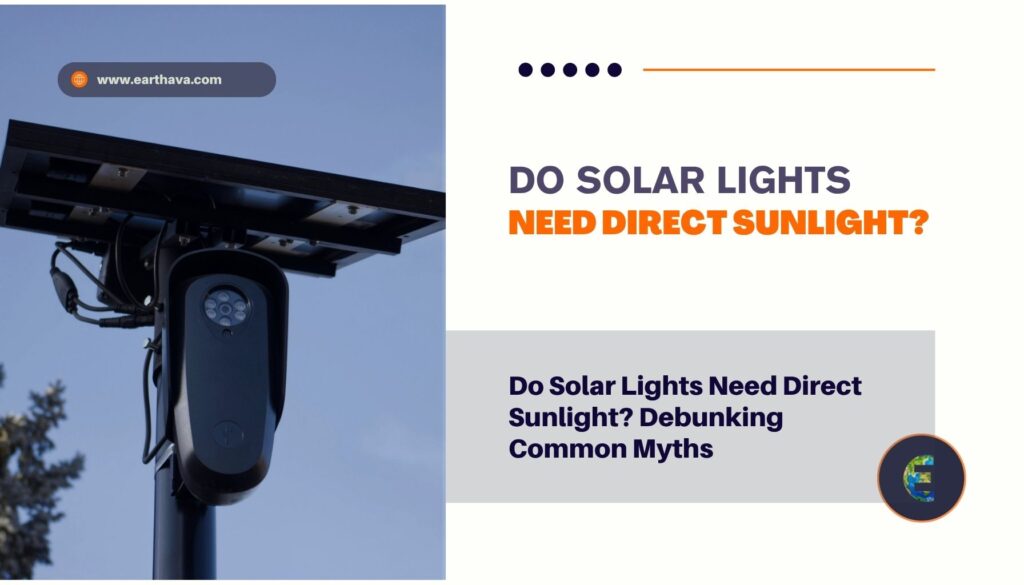Understanding the performance of solar lights and their relationship with sunlight is crucial to optimizing their use. Solar lights harness solar energy through photovoltaic cells to charge their batteries during the day, which then power the lights after dusk. While it is commonly assumed that direct sunlight is necessary for solar lights to function effectively, this is not entirely the case. The efficiency of solar lights does indeed improve with direct sunlight, as it provides the maximum amount of solar energy, but solar panels can still charge with indirect light, though at a lower efficiency.

The ability of solar lights to charge without direct sunlight allows for greater flexibility in placement and usage. Locations with partial shade or variable weather conditions can still support the operation of solar lights, albeit with some impact on their performance. The accumulation of solar energy and subsequent illumination duration can be lessened in these conditions. Improved battery technology and sensitive light sensors contribute to the reliable operation of solar lights, even when they receive less than ideal sunlight exposure.
Solar lighting technology has evolved to ensure that enough energy can be stored to keep the lights functioning throughout the night. For optimal performance, solar lights should be placed in an area where they receive the maximum amount of sunlight, but they are designed to adapt to varying light conditions. Choosing the right spot and maintaining the lights can help mitigate the reduced efficiency experienced in less sunny environments.
Principles of Solar Light Operation
Solar lights harness sunlight to generate and store electrical energy, a process involving two critical technologies: photovoltaic cells for conversion and batteries for energy storage.
Photovoltaic Cells and Solar Panels
Photovoltaic (PV) cells, also known as solar cells, are the primary components of solar panels. They consist of semiconductor materials, typically silicon, that absorb photons from sunlight. This photon absorption leads to the excitation of electrons in the semiconductor, creating an electrical current. A solar panel is composed of many interconnected solar cells, working together to increase energy production. The effectiveness of these cells directly correlates to light intensity, with stronger sunlight often yielding more electricity. The design and composition of PV cells determine how efficiently they can convert solar energy to electricity.
Electricity Generation and Storage
Once the solar panels convert sunlight into electricity, that energy needs to be stored in batteries for later use. Solar lights commonly use rechargeable batteries, which store the electricity generated by the solar cells. When sunlight is available, it charges the batteries, and this stored energy is then used to power the solar lights after dusk. The capacity of the batteries determines how long the lights can operate on the stored energy. Generally, with a full charge, these lights are designed to last throughout the hours of darkness, although this duration can be affected by the amount of sunlight received during the day—direct sunlight provides a more significant charge compared to indirect light.
Factors Influencing Solar Light Performance
Several key factors determine how well solar lights perform. These include local weather conditions, the positioning of the lights relating to sunlight, and the quality of light they receive.
Effects of Weather Conditions
Weather conditions play a pivotal role in the performance of solar lights. During cloudy weather, the intensity of sunlight reaching the solar panels is greatly diminished, which can affect the charging efficiency of the solar light’s battery. Shadows and shaded areas also influence charging ability, as they limit direct exposure to sunlight. Conversely, clear daylight conditions enhance performance by providing ample direct sunlight for optimal charging.
Importance of Location and Positioning
The location and positioning of solar lights are crucial for maximum exposure to sunlight. Ideal positioning ensures that lights receive the greatest amount of sunlight for the longest period during the day. Solar lights should be positioned away from obstructions that could cause shade, which would limit their ability to charge effectively.
Impact of Light Intensity and Exposure
Light intensity and exposure duration directly influence a solar light’s operation. Direct sunlight is the most effective way of charging solar lights, ensuring they function optimally when needed. Indirect sunlight can still contribute to the charging process but with lower efficiency. The longer the exposure to sunlight, whether direct or indirect, the more energy is stored and the better the performance of the solar light.
Optimizing Solar Light Usage
Solar lights offer a cost-effective and low maintenance lighting solution that harnesses the sun’s power. Achieving maximum efficiency and longevity hinges on proper installation and regular care.
Maintaining Maximum Efficiency
For solar lights to function at their peak, positioning is key. They should be placed in areas where they can absorb maximum sunlight during the day. Direct sunlight is ideal for charging the batteries fully, which in turn allows for longer illumination during darkness. Even solar garden lights, which are a popular choice due to their aesthetics, follow this rule.
Regular cleaning of the solar panels is crucial, as dirt and debris can obstruct sunlight. A simple, gentle wipe with a damp cloth can increase light intensity absorption. Making use of the on/off switch during prolonged periods of bad weather can help preserve battery life and maintain the durability of the solar-powered lights.
Guidelines for Installation and Care
Installation: Select a location that avoids shade and receives ample sunshine throughout the day. Adjusting the angle of the solar panels periodically to match the sun’s position can enhance efficiency. For optimal performance, install the lights away from artificial light sources to prevent confusion during dusk and dawn transitions.
Care: Inspect solar lights regularly for signs of wear and tear to ensure they remain long-lasting and efficient. If equipped, an on/off switch can be used to deactivate the lights when not needed, conserving energy and extending the lifetime of the battery. Seasonal adjustments may be necessary to account for the changing path of the sun and varying weather conditions.
Common Misconceptions and Best Practices
Before delving into the specifics, it’s essential to clear up common misunderstandings about solar lights and highlight the effective practices that ensure their best performance under various conditions.
Solar Lights in Various Weather Scenarios
Solar lights are often thought to be ineffective in anything but warm, sunny weather. However, direct sunlight is optimal but not essential for the charge process of these devices. They can still gather solar energy on cloudy days or in reduced sunlight situations. Their battery life can be compromised in extreme weather conditions like hot summers or snowy winters, but many are designed to withstand these elements.
- Cold climates: It’s commonly believed that solar lights are not suitable for cold environments. In reality, LED lights function more efficiently in cooler temperatures, although the battery may charge more slowly.
- Overcast days: While less effective than in full sun, solar lights continue to charge even when the sky is overcast, although the charging time will increase.
- Snowy conditions: Snow can impact the ability to charge, as it might cover the solar panels. However, light reflecting off the snow can potentially help with charging if the panels are kept clear.
Leveraging Artificial Light Sources
Another misconception is that solar lights are useless without access to direct sunlight. Actually, they can also utilize artificial light sources to a certain extent. While not as potent as sunlight, certain types of artificial lighting can contribute to the charging of solar lights.
- LED light sources: Utilizing LED or incandescent bulbs near solar lights can help them charge, albeit less efficiently than via sunlight.
- Indoor settings: Solar lights placed indoors can still charge under strong artificial lights, such as those emitted by halogen bulbs.
- Red light indicators: A red light often indicates that charging is occurring, which can even happen under artificial lighting, although this is not the most effective method.
By understanding the abilities of solar lighting under various scenarios, users can optimize their setup to extend the lifespan and effectiveness of their outdoor illumination solutions.


